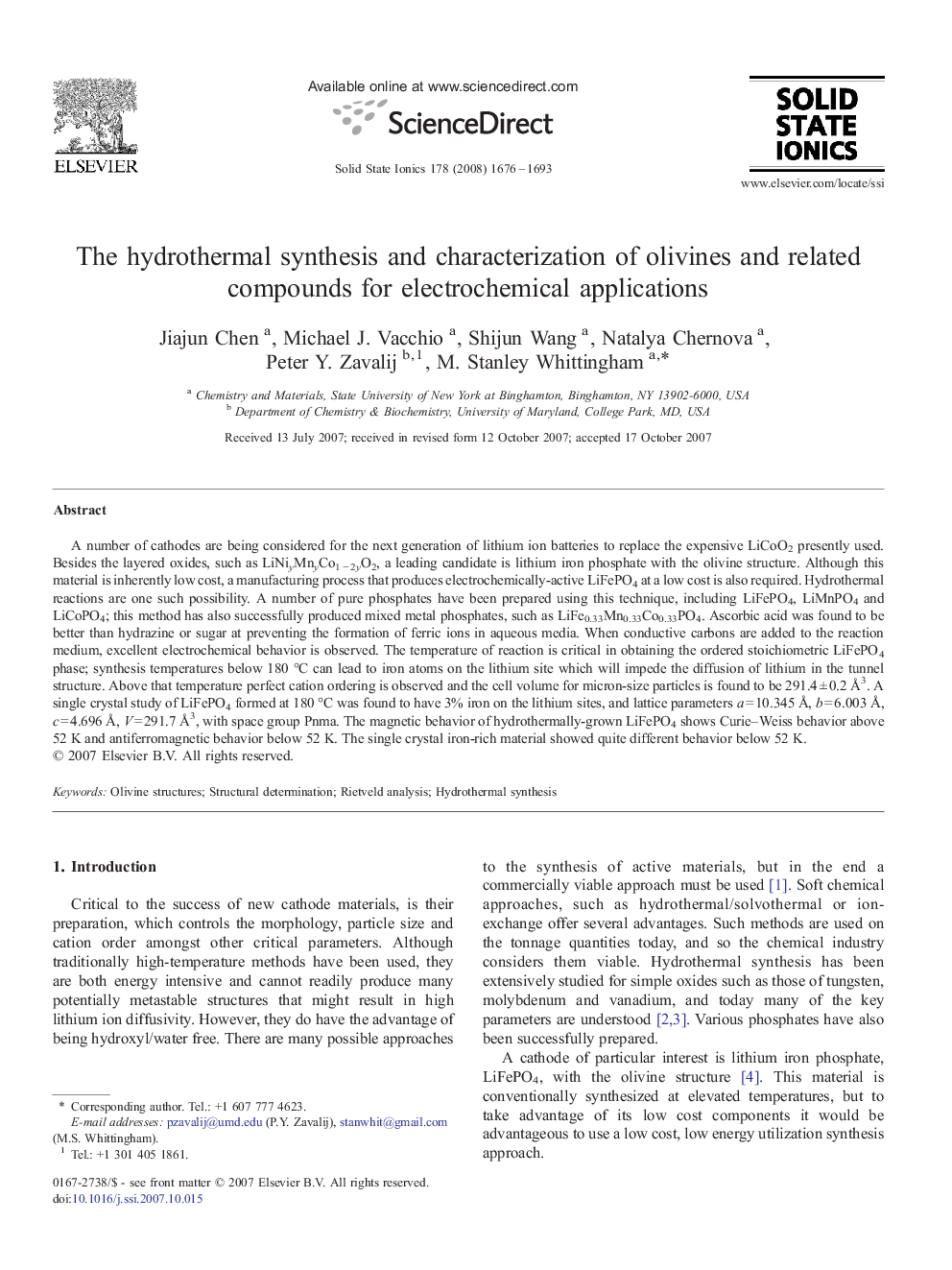| کد مقاله | کد نشریه | سال انتشار | مقاله انگلیسی | نسخه تمام متن |
|---|---|---|---|---|
| 1297348 | 1498384 | 2008 | 18 صفحه PDF | دانلود رایگان |

A number of cathodes are being considered for the next generation of lithium ion batteries to replace the expensive LiCoO2 presently used. Besides the layered oxides, such as LiNiyMnyCo1 − 2yO2, a leading candidate is lithium iron phosphate with the olivine structure. Although this material is inherently low cost, a manufacturing process that produces electrochemically-active LiFePO4 at a low cost is also required. Hydrothermal reactions are one such possibility. A number of pure phosphates have been prepared using this technique, including LiFePO4, LiMnPO4 and LiCoPO4; this method has also successfully produced mixed metal phosphates, such as LiFe0.33Mn0.33Co0.33PO4. Ascorbic acid was found to be better than hydrazine or sugar at preventing the formation of ferric ions in aqueous media. When conductive carbons are added to the reaction medium, excellent electrochemical behavior is observed. The temperature of reaction is critical in obtaining the ordered stoichiometric LiFePO4 phase; synthesis temperatures below 180 °C can lead to iron atoms on the lithium site which will impede the diffusion of lithium in the tunnel structure. Above that temperature perfect cation ordering is observed and the cell volume for micron-size particles is found to be 291.4 ± 0.2 Å3. A single crystal study of LiFePO4 formed at 180 °C was found to have 3% iron on the lithium sites, and lattice parameters a = 10.345 Å, b = 6.003 Å, c = 4.696 Å, V = 291.7 Å3, with space group Pnma. The magnetic behavior of hydrothermally-grown LiFePO4 shows Curie–Weiss behavior above 52 K and antiferromagnetic behavior below 52 K. The single crystal iron-rich material showed quite different behavior below 52 K.
Journal: Solid State Ionics - Volume 178, Issues 31–32, 15 January 2008, Pages 1676–1693